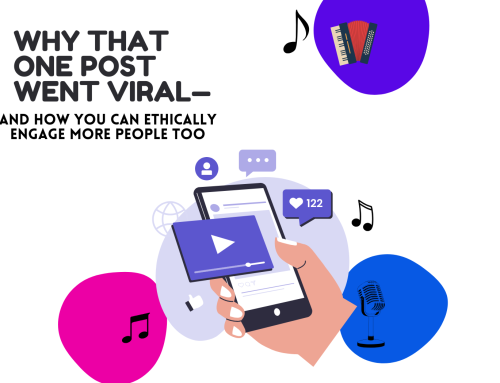by José Valentino Ruiz, Ph.D.
Abstract
This article introduces the “constellation career” as a liberating framework for 21st-century creative leaders, arguing that embracing a multidimensional professional identity—rooted in purpose, integration, and adaptability—offers a more resilient and impactful alternative to the outdated singularity of job titles. It also presents the Five P’s of Vocational Alignment—Purpose, Platform, Patterns, Partnerships, and Pace—as a practical guide for cultivating clarity, coherence, and sustainability across diverse professional roles.
Keywords: Constellation career, creative leadership, polymathy, vocational identity, interdisciplinary work, professional purpose, systems thinking, portfolio career, integration, 21st-century careers.
Table of Contents
Titles to Galaxies
For centuries, professional identity has been tightly tethered to job titles. We are asked from childhood, “What do you want to be when you grow up?” — not “Who do you want to become?” or “What kind of problems do you want to solve?” These titles—teacher, lawyer, artist, manager—once served as shorthand for what we did, but over time they’ve come to define who we are. In the modern era, where change is constant and creativity is currency, the tyranny of job titles is not only outdated—it’s harmful.
In their place arises a liberating model: the constellation career.
Rather than define themselves by one title, creative leaders today are cultivating interconnected clusters of roles, each one a “star” contributing to the larger vocational galaxy they inhabit. These individuals are not fragmented—they are polymaths, systems thinkers, and purpose-driven innovators whose seemingly diverse pursuits form a coherent narrative of calling and contribution.
This isn’t just a clever metaphor. It is a necessary framework for how we must begin to understand leadership, creativity, and professional success in the 21st century.
The Crisis of the Singular Identity
For decades, institutions have operated under a factory-model understanding of labor: clearly delineated job roles, organizational hierarchies, and specialized silos. This structure thrived in an industrial economy. But in an age of digital platforms, AI integration, and interdisciplinary innovation, the rigidity of fixed roles is more constraint than asset.
Creative professionals, in particular, often find themselves penalized for not fitting neatly into boxes. A person who teaches, produces, writes, consults, and leads is often asked: So what do you actually do? as though doing more than one thing well is inherently suspicious or unserious.
The result? Many creatives shrink their own narratives to match others’ expectations. They settle for a smaller story, a narrower label, or a safer job description. But this betrays the complex, multifaceted callings they carry.
As writer David Epstein argues in Range: Why Generalists Triumph in a Specialized World, “We are often taught that the path to excellence is to narrow focus early, and never waver. But… breadth, not narrowness, is the norm of success in most domains” (Epstein, 2019, p. 8). The polymath — not the specialist — is often best suited for solving today’s most urgent and complex challenges.
What Is a Constellation Career?
A constellation career is not a chaotic mishmash of side hustles. It is a curated, intentional set of vocational expressions that are unified by deeper purpose. Like the stars that form Orion’s Belt or the Big Dipper, each role may seem discrete at first glance. But when viewed together, they tell a bigger story.
In this model, roles might include:
-
Educator
-
Consultant
-
Creative director
-
Musician or performer
-
Community organizer
-
Researcher
-
Entrepreneur
-
Publisher
-
Mentor
- Cultural Diplomat
The key is not how many titles one holds, but how they align toward a coherent mission. Creative leaders in constellation careers don’t balance roles—they integrate them. This requires a high level of vocational clarity and purpose-led design, but when done well, the impact is exponential.
As Herminia Ibarra, Professor of Organizational Behavior at London Business School, puts it: “We learn who we are—in practice, not in theory—by testing reality, not by looking inside. We discover the possibilities by doing, by trying out new activities, building new networks, finding new role models” (Ibarra, 2003, p. 2).
Why This Matters Now
1. The Economy Demands It
In a volatile, globalized economy, job security is no longer guaranteed by traditional employment. Academic institutions are trimming faculty lines. Music and arts organizations have shifted to gig-based models. Corporate structures are flattening, and even nonprofits are outsourcing creative leadership roles.
According to the World Economic Forum’s Future of Jobs Report, “Portfolio careers—characterized by individuals holding multiple freelance, part-time, or project-based roles—are becoming the norm in creative and knowledge-based industries” (WEF, 2023). Workers must now think like entrepreneurs—whether or not they formally identify as such.
In this environment, a constellation career isn’t indulgent. It’s strategic. It enables individuals to build multiple income streams, navigate institutional shifts, and respond flexibly to new opportunities.
2. Creativity Thrives on Cross-Pollination
One of the most potent advantages of a constellation career is cross-pollination. A creative leader who teaches by day and produces albums by night doesn’t have split attention—they have synergistic insight. Their pedagogical strategies inform their music production. Their performance experience sharpens their public speaking. Their research fuels their consulting.
This is how innovation happens. As organizational psychologist Adam Grant notes, “The most original thinkers are often not the deepest in their fields. They are the broadest—they find inspiration in unexpected places” (Grant, 2016, p. 19).
The constellation model allows for this breadth to not just exist, but thrive. It creates ecosystems of learning, making, and leading that reinforce each other rather than compete.
3. Institutions Are No Longer Primary Identity Anchors
In prior generations, people aligned their identities with the institutions they served: “I work for IBM.” “I teach at Columbia.” Today, that loyalty is often one-sided. Institutions restructure, downsize, or rebrand without warning. As such, many professionals are learning to place their identity in their mission—not their employer.
In a constellation model, institutional affiliations matter—but they are not defining. The individual’s purpose, vision, and values are what unify their professional pursuits. This shift allows for long-term vocational stability even amid short-term institutional volatility.
The Risks of Living by Titles Alone
Over-reliance on titles can be professionally limiting and psychologically damaging. When our identity is tethered to one role, one institution, or one box, we’re vulnerable to collapse when that title is threatened.
This was starkly evident during the COVID-19 pandemic. Musicians who relied solely on touring saw their careers paused indefinitely. Educators who taught only in-person struggled to adapt. But those who had built diversified constellations—digital educators, hybrid performers, cross-disciplinary leaders—were able to pivot, not panic.
Job titles are fragile. But purpose is resilient.
Naming the Work, Not Just the Role
One of the practical challenges of living a constellation career is explaining it to others. Language matters. But rather than defaulting to title-based descriptions, we must shift toward function-based language. Instead of saying, “I’m an academic and a musician and a producer,” one might say, “I help people find their voice through education, storytelling, and sound.”
This shift—from titles to functions—liberates the vocational imagination. It focuses on what you do and why instead of where you sit in a hierarchy. It opens the door for collaboration, innovation, and multi-contextual leadership.
The Five P’s of Vocational Alignment
To effectively embrace a constellation career, creative leaders must move beyond task-juggling and develop clarity across five key dimensions—what I call the “Five P’s of Vocational Alignment”:
-
Purpose: What is the unifying mission behind your work?
-
Platform: What roles and projects align best with that mission?
-
Patterns: What rhythms and boundaries allow for sustainability?
-
Partnerships: Who are your trusted collaborators across roles?
-
Pace: What growth velocity is realistic for your season of life?
This clarity allows for discernment—not every opportunity is a good one. The goal is not to be busy; it is to be integrated, fruitful, and aligned.
Multiplicity as a Leadership Asset
The constellation career also reframes how we see leadership. Rather than viewing leadership as tied to position, it sees it as influence across contexts. Leaders in this model do not wait for permission. They create, convene, and catalyze. They move fluidly across disciplines. They learn fast, teach well, and build infrastructure that serves others.
Their leadership is less about visibility and more about multiplicity. As theologian and educator Parker Palmer puts it, “The power for authentic leadership… is found not in external arrangements, but in the human heart” (Palmer, 2000, p. 11). Constellation leaders carry that heart across the varied platforms they inhabit.
Resisting the Pressure to Choose
Society often pressures multifaceted professionals to “choose one lane.” But that advice assumes a road model when we are living in a galactic one. You don’t need to collapse your career into one track to be taken seriously. If the roles in your constellation serve your mission, then your credibility is not diluted—it’s distributed.
This is especially critical for emerging professionals. The message must be: you don’t have to shrink to succeed. Your job is not to contort your calling to fit someone else’s idea of success. Your job is to build a vocational galaxy where each role reflects your deepest sense of contribution and purpose.
From Titles to Testimonies
In the end, we must move from title-chasing to impact-making. The world is not asking for more specialists trapped in narrow silos. It is hungry for creative leaders who embody breadth with depth, complexity with clarity, and passion with purpose.
A constellation career is not a compromise—it is a calling. It reflects a life lived in intentional multiplicity, rooted in mission and directed toward legacy.
So the next time someone asks, “What do you do?” consider replying with something more illuminating than a title. Tell them what you build. Tell them who you serve. Tell them the story your stars are telling.
Because that’s what leadership looks like now: not a ladder, but a galaxy. And you were made to shine across more than one sky.
References
Epstein, D. (2019). Range: Why generalists triumph in a specialized world. Riverhead Books.
Grant, A. (2016). Originals: How non-conformists move the world. Viking.
Ibarra, H. (2003). Working identity: Unconventional strategies for reinventing your career. Harvard Business Review Press.
World Economic Forum. (2023). The Future of Jobs Report 2023. Retrieved from https://www.weforum.org/reports/the-future-of-jobs-report-2023
Palmer, P. J. (2000). Let your life speak: Listening for the voice of vocation. Jossey-Bass.




Leave A Comment